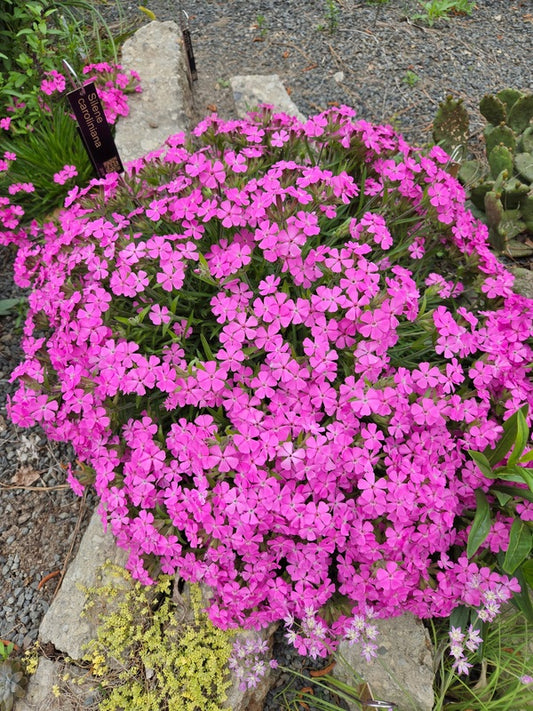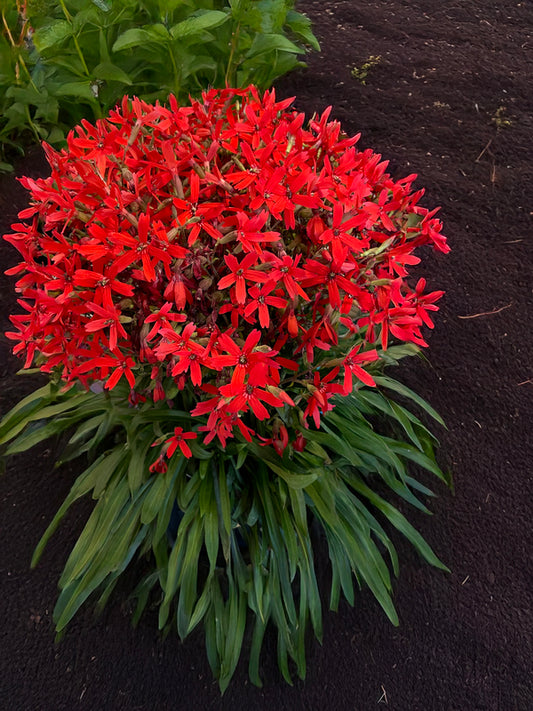Flowers in the genus silene typically range from pink-to-red, including several white-flowered species. They all attract butterflies and the red-flowered silene are also hummingbird favorites.
-
Silene caroliniana 'Show Me'
Item #: 14702
Zones: 5a to 8b, at least
Dormancy: Evergreen
Height: 8" tall
Culture: Sun
Origin: United States
Pot Size: 3.5" pot (24 fl. oz/0.7 L)
Regular price $23.00Regular priceUnit price per -
Silene virginica ‘Forged by Fire‘ PP 36,247
Item #: 18890
Zones: 5b to 9a, guessing
Dormancy: Evergreen
Height: 15" tall
Culture: Part Sun
Origin: United States
Pot Size: 3.5" pot (24 fl. oz/0.7 L)
Regular price $25.00Regular priceUnit price per
More Information About Silene
Silene is a widespread genus of perennials native from Africa to America and from Mediterranean Europe to Asia. Being in the family Caryophyllaceae makes this perennial a first cousin to other popular garden plants such as lychnis and dianthus.
Silene flowers typically range from pink-to-red, including several white-flowered species. While they all have flowers that attract butterflies the red-flowered species are also hummingbird favorites. Although generally a small plant there are large-ish exceptions.
Silene (Catchfly) Growing Conditions
Many catchfly plants are edge-of-the-woods plants suitable for an open garden spot or in a rock garden...as long as the soil is well-drained. Despite its dislike of wet feet when dormant, Silene will flower best if kept evenly watered during its growing season.
Silene Trivia: The genus Silene is also known as Catchfly because the somewhat sticky leaves tend to trap insects. Silene is not a true carnivorous plant, but may be on the evolutionary path to someday becoming carnivorous like the sticky-leaved Sundew. To learn more, read our article about carnivorous plants.






